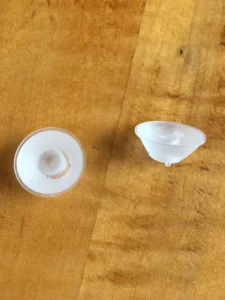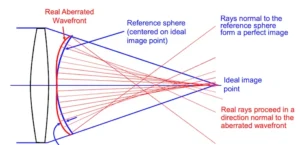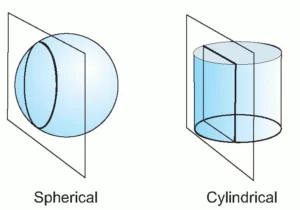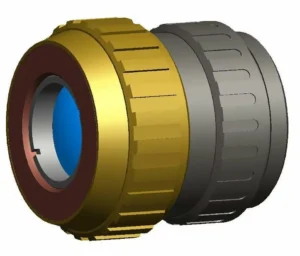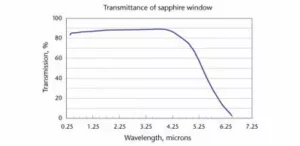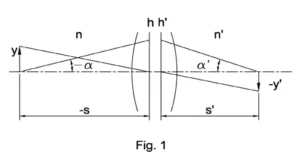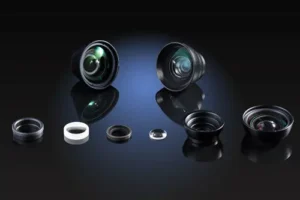In the next couple of weeks, we will be talking about the different design requirements and restrictions when working with steering mirrors, also known as scanning mirrors. The objective is to show you that different applications require different solutions, and that even though some applications may seem similar, the specific limitations will affect your design choices.
In today’s article, we will talk about steering mirrors used in laser markings. The markings are very commonly used as they help to keep track of production processes, add barcodes in packaging, track electronic components, etc. In order to create these markings, a laser beam is sent into a movable mirror that redirects the beam to our target surface.
These mirrors are usually mounted on bearings controlled by galvanometers that change the mirrors’ angular position and rotational velocity. A precise pointing of laser beams is often needed where disturbances like vibrations, turbulence, and change in temperatures occur. Those noisy conditions cause the laser to move away from ideal conditions thus creating performance limitations where small disturbances result in significant degradation.
Types of Steering Mirrors
There are different ways to create a steering mirror. It is possible to deflect a laser using acousto-optic deflectors, spatial light modulators (SLM), deformable mirrors (DM), electromagnetic actuators, and Fast Scanning Mirrors (FSM) where, instead of bearings, the mirror may be mounted on mechanisms. The last two kinds of mirrors are more common due to their lower cost, easier control, and physical robustness.
Galvanometer-based steering mirrors and FSM have both their advantages and disadvantages. The choice will depend on your application, budget, and timeframe. One advantage of FSM over galvanometer mirrors is the lack of bearings, so the FSM system doesn’t rely on them or brackets and will remain stable throughout the life of the pointing and tracking system.
Also, an FSM has a larger aperture than a galvanometer, which allows the FSM to eliminate wave distortion and displacement jitter. Using an FSM also gives you the ability to utilize a larger selection of mirrors and coatings, allowing for the specialization of each pointing and tracking system included in your finished devices.
Figure 1 shows the main difference between a galvanometer steering beam and an FSM. The FSM connects the mirror to a base whose tilt can be controlled by some actuators. It is possible to design an FSM that can provide a two-axis beam control. On the other hand, galvanometer steering mirrors are based on a mirror mounted on the galvanometer axis. In order to create a two-axis steering mechanism, it would be necessary to use two such mirrors.

Surface
The coating material for the mirror will depend mainly on the range of wavelengths that you are operating. If you are working in the visible spectrum, then working with an aluminum coating will be enough to have over 95% reflectivity. If working in the infrared spectrum, then a Gold coating will be necessary.
That doesn’t mean that a gold coating wouldn’t work with visible light but the increase in cost usually doesn’t justify a gain of 2-3% in reflectivity.
Specifications
In terms of specification, there are several options depending on your application. For marking laser systems, here are some “standard” values. As always, don’t hesitate to contact us so we can tailor our design to your needs:
Parameter
Angular Range
Flatness
Resolution
Values
2-degree
less or equal to lambda/10
less or equal to 1 urad
